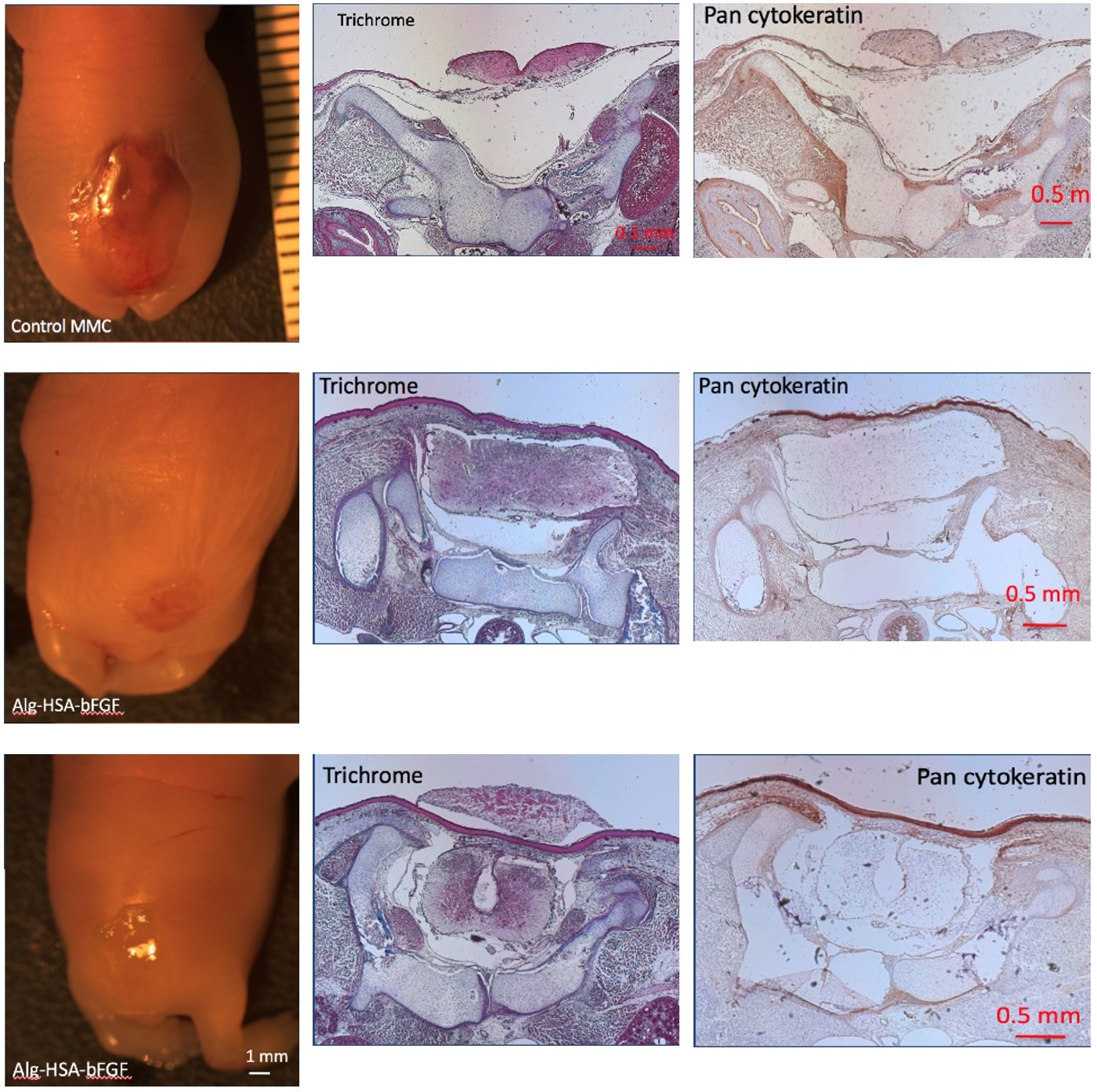Alginate microparticles loaded with basic fibroblast growth factor induce tissue coverage in a rat model of myelomeningocele
*James S. Farrelly1, *Anthony H. Bianchi2, *Adele S. Ricciardi1, *Gina Buzzelli2, *Samantha L. Ahle1, *Mollie R. Freedman-Weiss1, *Valerie L. Luks1, *W. Mark Saltzman3, *David H. Stitelman1
1Yale University School of Medicine, New Haven, CT; 2Department of Biomedical Engineering, School of Engineering and Applied Science, Yale University, New Haven, CT; 3Yale University School of Medicine, Department of Biomedical Engineering, School of Engineering and Applied Science, Yale University, New Haven, CT
Objective: To develop a minimally invasive intra-amniotic therapy for prenatal treatment of myelomeningocele (MMC) in an established rat model.
Design: Basic science study
Setting: Laboratory
Patients: Rats
Interventions: Time-dated rats were gavage-fed retinoic acid to induce MMC. Groups received intra-amniotic injections at E17.5 with synthetic particles loaded with fluorescent dye, basic fibroblast growth factor (Alg-HSA-bFGF), fluorescently tagged albumin (Alginate-BSA-TR), free bFGF, blank alginate particles (Alg-Blank), or PBS. Groups were analyzed at 3 hours for fluorescent particle binding specificity or at term (E21) to determine presence of MMC tissue coverage.
Main Outcome Measures: Fluorescence ratios of MMC defect vs skin after particle injections; presence of partial or complete tissue covering nerves in MMC defect
Results: Alginate microparticles demonstrated specific binding to the MMC defect 3 hours after injection. At E21, 150 of 239 treated pups (62.8%) were viable. 18 of 61 (30%) treated with Alg-HSA-bFGF showed soft tissue coverage compared to 0 of 24 non-injected (P=0.0021), 0 of 13 PBS (P=0.0297), and 0 of 42 free bFGF (P= P<0.0001). Particle aggregate scaffolds associated with disordered keratinized tissue were observed in 2 of 18 (11%) Alg-BSA-TR and 3 of 19 (16%) Alg-Blank specimens.
Conclusions: Alginate microparticles bind specifically to the MMC defect without surface modification. Injection of microparticles loaded with bFGF resulted in significant soft tissue coverage of the MMC defect compared to controls. 





